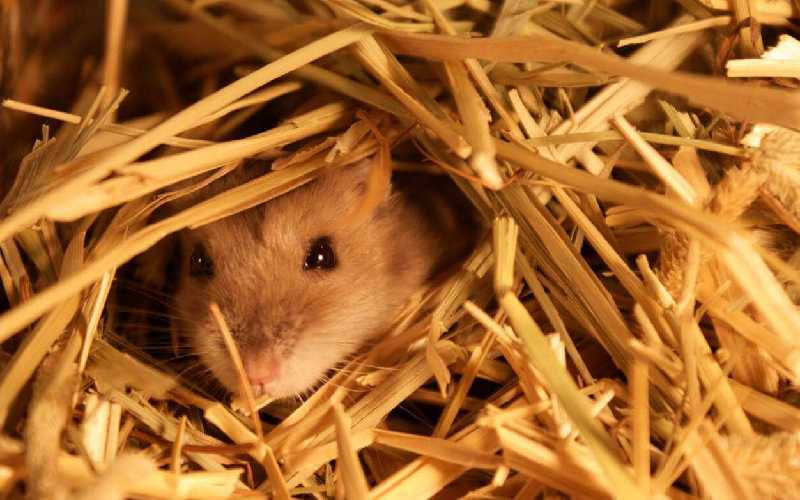hamsterhappy.co.uk is a participant in the Amazon Services LLC Associates Program and other affiliate advertising programs designed to provide a means for us to earn fees by linking to Amazon.com and affiliated sites. Affiliate links may be used on this page and in hamsterhappy.co.uk articles, but they do not impact on the price that you pay and they do help me to get this information to you for free. Read my privacy policy for more information regarding affiliates.
Syrian Hamsters are what it’s called “permissive” hibernators. This means that they only enter a state of Hibernation if their bodies really need it and ask for it, but they do not have any type of internal clock that tells them that it is required of them to hibernate during the winter. The permissive nature of their hibernation allows Hamster owners to create the perfect environment for them at all times, avoiding the hibernation state and the dormancy of their hamsters.
A domesticated Syrian Hamster that goes into hibernation is a hamster that feels the cold. You might want to look out for signs of sickness and check the temperature of their feet to make sure that the weather around them is suitable for their living conditions. There are a couple of tricks to help your hamster wake back up from hibernation such as setting their cage on a heating pad to provide them with the warmth that they long for.
But winter isn’t the only season that Syrian Hamsters brace themselves for. During hotter, dryer seasons, the little fluffs might enter a state that is known as “aestivation”. This term speaks of the prolonged state of dormancy during harsh conditions in the environment around them such as extreme heat or suffocating dryness. As Hamsters have traveled across the world and adapted different living conditions, some of the fluffs have the kick of becoming aestivators in times of need. Although it may sound complicated, it shouldn’t be too difficult to wager. To keep it short and sweet, generally speaking, we can assume that most hamsters go into Hibernation when it is between 4 and 14 Celsius and they go into Aestivation when it is hotter than 28 Celsius. Although the state of Aestivation can also be triggered by the dryness in the air.
Although there are plenty of elements that play into hibernation and aestivation of Hamsters in the wild, when it comes to domestic hamsters, the main concern is temperature and weather. That being said, it is important to know that not every hamster hibernates. Their adaptable, cold resistant nature is very complex and their instinctual responses could go beyond their sensitivities to heat and cold. The reason to this differential behaviour between hamsters of the same species are still sort of unknown and unclear. It is very unlikely that a hamster in captivity will ever hibernate, but if it happens, you need to be prepared. In order to do so, we recommend that you read our piece about Hamster Hibernation.
If you found this article charming and you wish to learn more about Syrian Hamsters, you might be interested to know about:



1 thought on “Do Syrian Hamsters hibernate?”